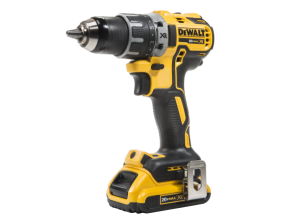Table of Contents
Introduction
A drill, as we know, is the equipment used in placing holes into objects. The basic types of motor
Drills are the Brushed and Brushless Drills. People now know of Brushed Drills and are giving more attention to it, unlike the brushless drills, but this is changing as there is very little difference between them. This difference stands out only if you are a professional who uses drills for work activities.
The brushless drill does not come with a carbon brush feature, which gives it its brushless title. The brushed motor drill was thought up by Ernest Werner Von Siemens in 1856, and this
Has given rise to the arrival of the brushless drill in the 1980s. Initially, the Brushless Drill came along with a power dimmer that helped transform current from AC to DC, then into a 3- phase frequency technology. Now, in addition to that, it has in place high voltage transmitters as well.
More improvements on the brushless drills over time make it a favorite for DIYers and even industrial users. Also, because the brushless drills can produce less friction and less heat, it is more efficient than the brushed drills.
You can understand how a typical drill evolved into a brushless by reading on the History of the drill
How The Brushless Drill Works
A drill’s internal working system operates a motor system consisting of magnets, commutator, armature, and carbon brushes. The internal working system of the drill works according to its laid down design.
With the brushless drill, only a magnet and armature of the four parts mentioned are present.
After the trigger gets squeezed, the carbon brush and commutator use a quicker transmission of charge. This charge is then produced by the battery and directed to the armature using a circuit board pathway.
It can also differentiate an object’s thickness to be drilled with this method of power circulation. The brushless drill operates using DC’s conversion to a changeable frequency of 3 phases, which provides a rotating field for its motor coils. The amount of power needed for any drilling is thus calculated for by the drill. Drilling is more efficient and enjoyable using the brushless drill.
Why a Brushless Drill In Place Of a Brushed Drill?
Majority of people use the brushless drill despite how expensive it is. They have the notion that regardless of the cost of the brushless
Drills, it has a smaller size, lasts longer, not prone to wear and tear. Brushless drill is also more efficient than the brushed drill, amongst other reasons listed here.
Absence of Brushes
With this feature, issues with overheating, untimely breakdowns, etc. reduces. The machine lasts for longer as a result.
Absence of Friction
The friction problem is a constant with the use of a brushed
Drill—friction amounts for excess heat generation and quicker wear and tear. Without friction in the brushless drills, heat reduces, and the machine can operate without producing sparks unique to the brushed drills.
Reduced Heat and Noise
Due to the winding operation of a brushless drill, heat expels quicker than the brushed drill as heat is only created on the drill and not in the drill’s internal workings.
Greater Efficiency
The efficiency of the brushless drill increases due to lesser heat production. Also, the heat generated in the stator coil of the machine reduces. This more secondary heat production allows for more work time in comparison with that of the brushed drill.
Easy Maintenance
The brushless drill can easily be maintained and is far less expensive too. With the Brushed drill, there is a need for constant change of brushes, but the reverse is the case for the brushless drill, as according to its name, it comes without the brush feature.
How to Maintain a Brushless Drill
The brushless drill has so many things making people go for it; fixed coils, absence of brushes, reduced heat, longer shelf life, etc. However, its style of maintenance is essential.
As already pointed, the drill does not need brush replacement, which is the number one maintenance strategy for the brushed drill. The brushless drill only requires professional handling due to its complexity and the necessity of multiplying the windings to provide the much-needed heat reduction. Your machine will work to your satisfaction once you have this in mind.
Conclusion
The brushed drill, though in existence for a far longer time than the brushless drill, might have to go into extinction but for the high cost of the Brushless Drill.
With all the modifications added continuously by several machine companies, the brushless might not just be an industry favorite. Still, it can become appealing for households as well. In obtaining machines, efficiency and longer shelf life are essential requirements, and the brushless drills provide all this and more.

